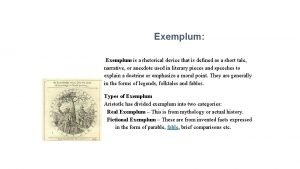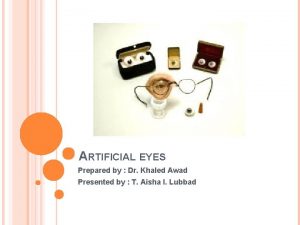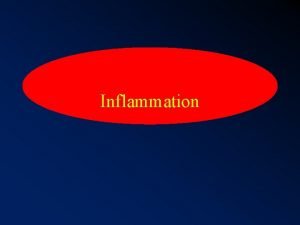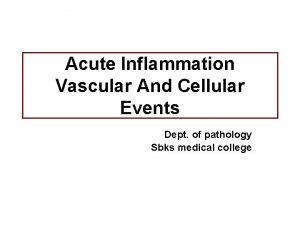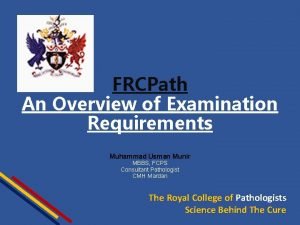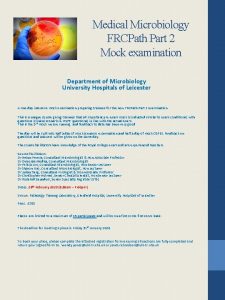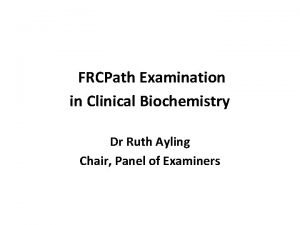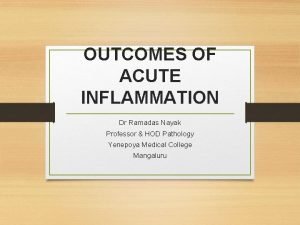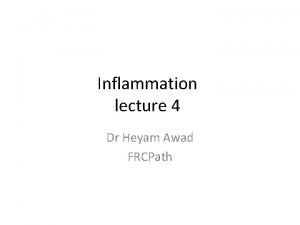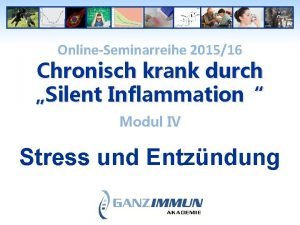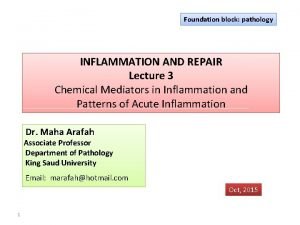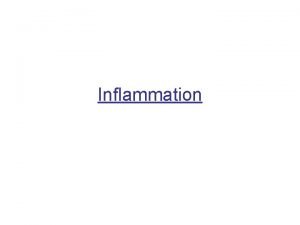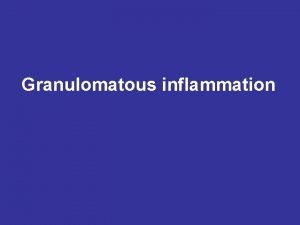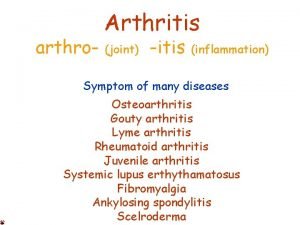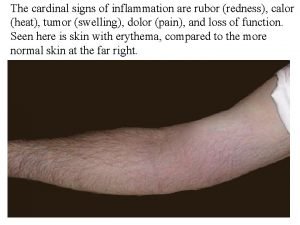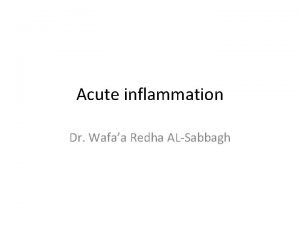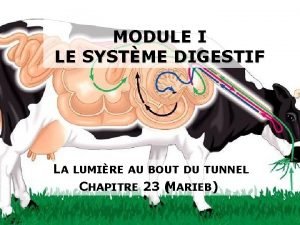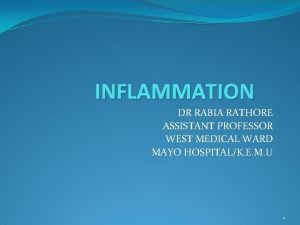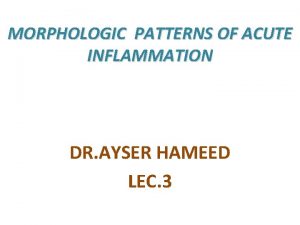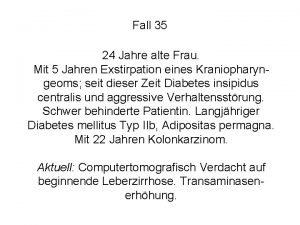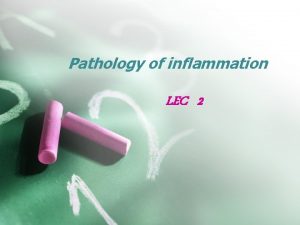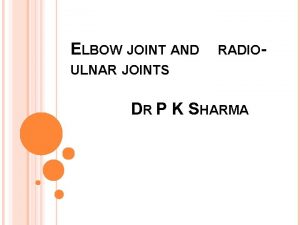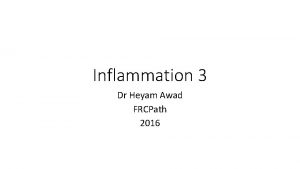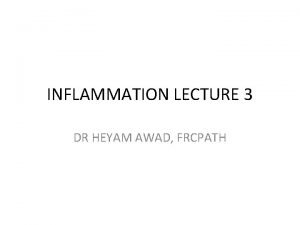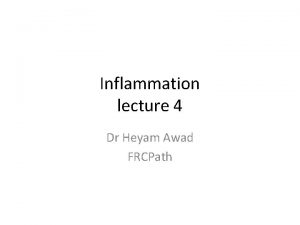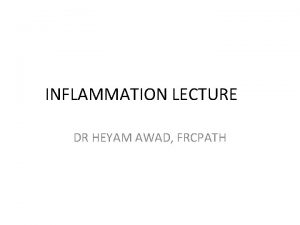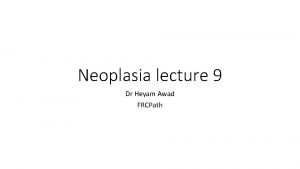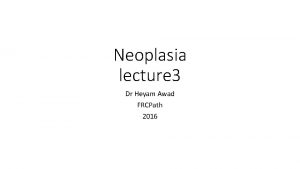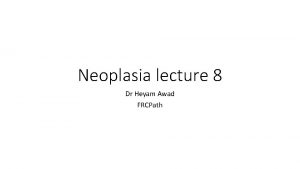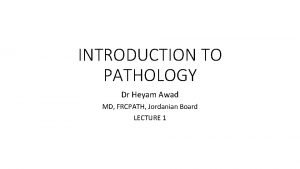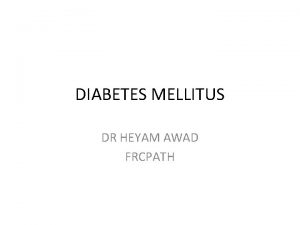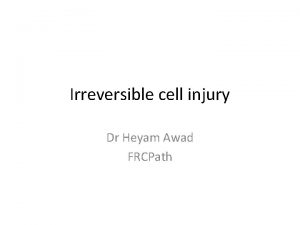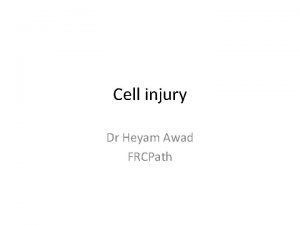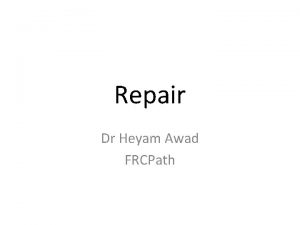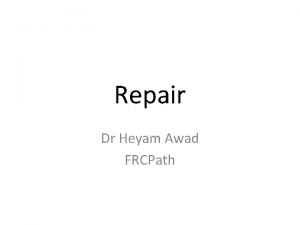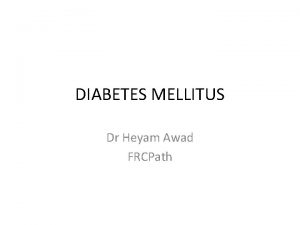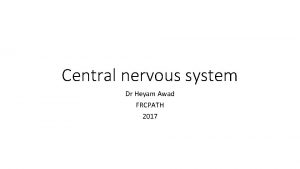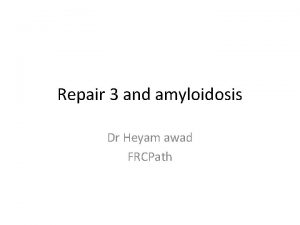Inflammation lecture 2 Dr Heyam Awad FRCPath Cellular































- Slides: 31

Inflammation lecture 2 Dr Heyam Awad FRCPath

Cellular events Inflammation, , , recruitment and activation of leukocytes. These leukocytes ingest offending agents but also produce mediators capable of tissue destruction

Leukocyte recruitment • • • Margination Rolling Firm adhesion Transmigration Chemotaxis


Margination • Accumulation of WBC at the periphery of the vessel walls. • Due to stasis.

Rolling • Endothelial cells activated by cytokines express adhesion molecules to which WBCs adhere loosely • WBCs attach and detach…. Roll • Rolling slows them down • Adhesion molecules responsible : selectin family.

Selectins • • On WBCs and endothelium. E selectin… endothelium P selectin…. Platelets and endothelium L selectin… leukocytes

• Selectins bind oligosaccharides. • Endothelial selectins present at low levels or not at all on resting endothelial cells. • Cytokines. . Increase expression of selectins. • This overexpression occurs locally at the site of injury.

adhesion • Integrin family of adhesion molecules. • Present on leukocytes and have ligands on endothelial cells. • Integrins expressed normally on plasma membrane on a low affinity form…. Activation by chemokines changes the affinity. • Conformational change and clustering of integrins changes the affinity.

Integrins

Endothelial ligands of integrins • Il 1 and TNF activate endothelial cells to express integrin ligands. • Result: firm stable attachment of leukocytes to endothelial ells.

Rolling and adhesion

Transmigration • Leukocytes migrate through vessel walls by squeezing through junctions between endothelial cells. • =Diapedesis. • This occurs in the venules of systemic circulation and capillaries of pulmonary circulation.

• Transmigration is stimulated by chemokines. • PECAM 1 an adhesion molecule expressed on endothelial and leukocytes facilitates diapedesis. • Leukocytes secrete collagenase to pass through basement membrane.

chemotaxis • Movement of WBCs to site of injury along a chemical gradient,

chemotaxis

Chemotactic agents • • Bacterial products Cytokines, especially chemokines Complement components, C 5 a Products of arachidonic acid ; leukotriene B 4

Chemotaxis • Chemotactic agents bind to cell surface receptors that cause assembly of cytoskeletal contractile elements which are important for movement. • WBCs move by extending pseudopods that fix ECM and pull the cell in the direction of the pseudopod. • High density of chemokine receptors at the leading edge of the cell directs this movement.

Leukocyte activation • Phagocytosis • Intracellular destruction of phagocytosed microbes and dead cells. • Production of mediators. • Liberation of substances that kill extracellular microbes and dead tissues.


phagocytosis Three steps: • 1. recognition and attachment • 2. engulfment • 3. killing


recognition By cell receptors to • 1. microbial components. • 2. Dead cells. • 3. host proteins = opsonins ( coat microbes and target them for phagocytosis)

Engulfment

Killing and degradation Killing by : Lysosomal enzymes Oxygen free radicals Reactive nitrogen species

Reactive oxygen species • Produced by NADPH oxidase… produces superoxide ion. • Superoxide converted by spontaneous dismutation to Hydrogen peroxide. • Hydrogen peroxide converted to HOCL radical by neutrophil myeloperoxidase. .


Lysosomal enzymes • Acid hydrolases. • Most important: elastase.

NET • Extracellular fibrillar networks produced by neutrophils in response to infections. • Contain nuclear chromatin and enzymes. • Trap and kill infectious agents.

NET

NET
 What does exemplum mean
What does exemplum mean Awad mataria
Awad mataria Dr khaled awad
Dr khaled awad Cellular events of inflammation
Cellular events of inflammation Cellular events of acute inflammation
Cellular events of acute inflammation Cellular events of acute inflammation
Cellular events of acute inflammation Cellular events of acute inflammation
Cellular events of acute inflammation Frcpath eligibility
Frcpath eligibility Frcpath part 1 microbiology
Frcpath part 1 microbiology Dr ayling sanjaya
Dr ayling sanjaya 01:640:244 lecture notes - lecture 15: plat, idah, farad
01:640:244 lecture notes - lecture 15: plat, idah, farad Abcsses
Abcsses Systemic effect of inflammation
Systemic effect of inflammation Chemical mediators of inflammation
Chemical mediators of inflammation Silent inflammation - chronisch krank
Silent inflammation - chronisch krank Sistema complemento funções
Sistema complemento funções Granulomatois
Granulomatois Caseating granuloma vs noncaseating
Caseating granuloma vs noncaseating Itis inflammation
Itis inflammation Phagocytosis definition
Phagocytosis definition Sublingual dermoid
Sublingual dermoid Cardinal symptoms of inflammation
Cardinal symptoms of inflammation Redha meaning
Redha meaning Stages of inflammation
Stages of inflammation Schéma gros intestin
Schéma gros intestin Serous inflammation examples
Serous inflammation examples Morphologic patterns of acute inflammation
Morphologic patterns of acute inflammation Periportal inflammation
Periportal inflammation Inflammation fever
Inflammation fever Acute inflammation
Acute inflammation Upper radioulnar joint
Upper radioulnar joint Otitis media with effusion otoscopy
Otitis media with effusion otoscopy
